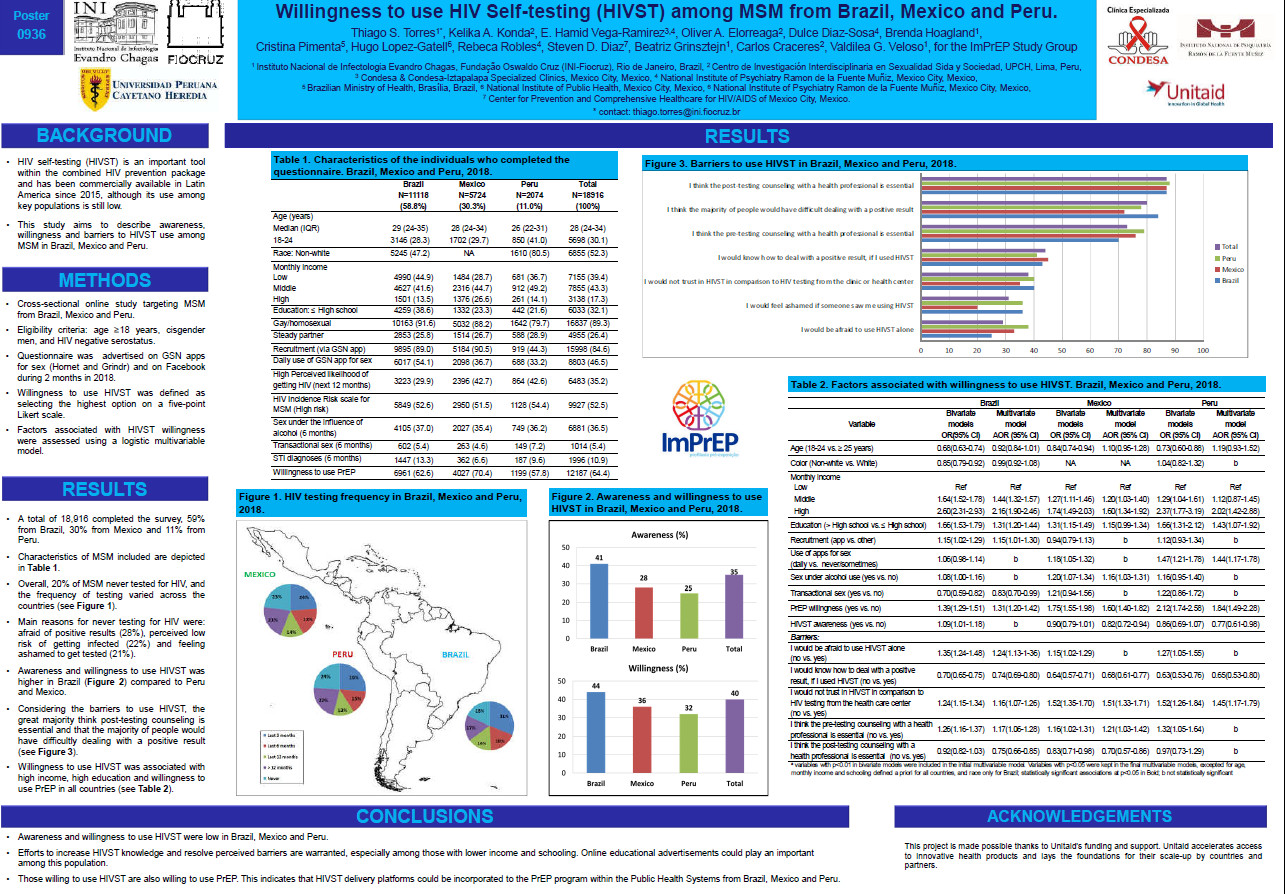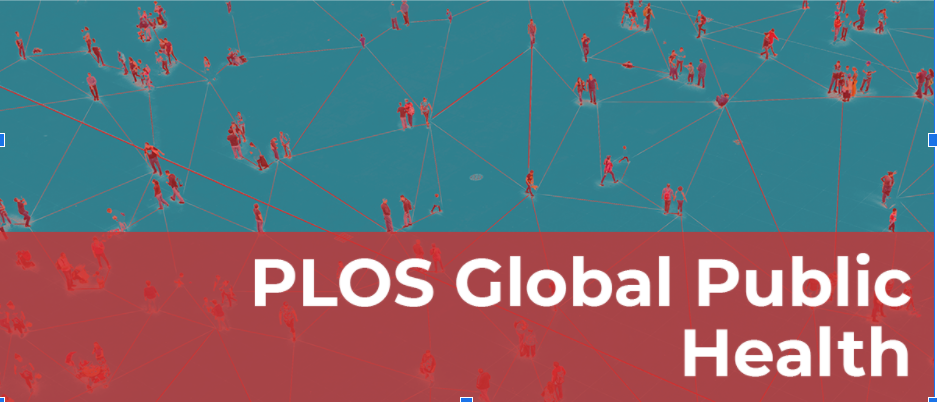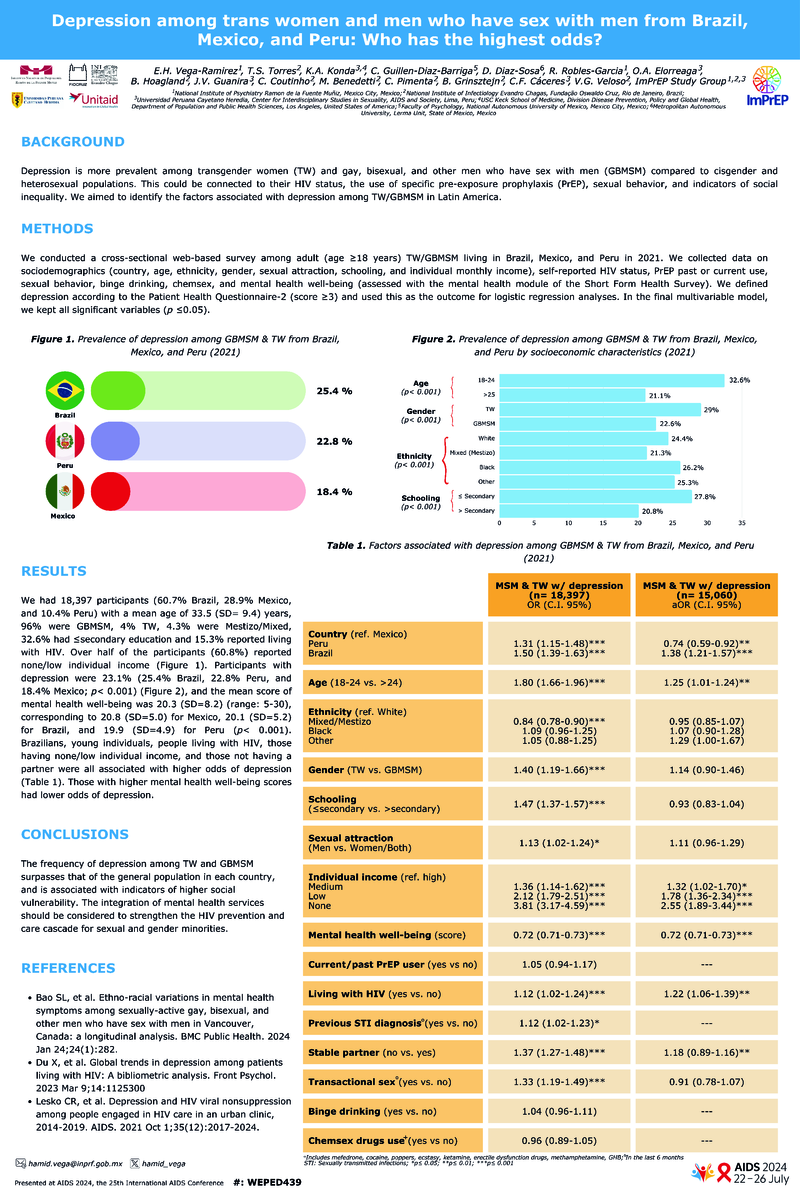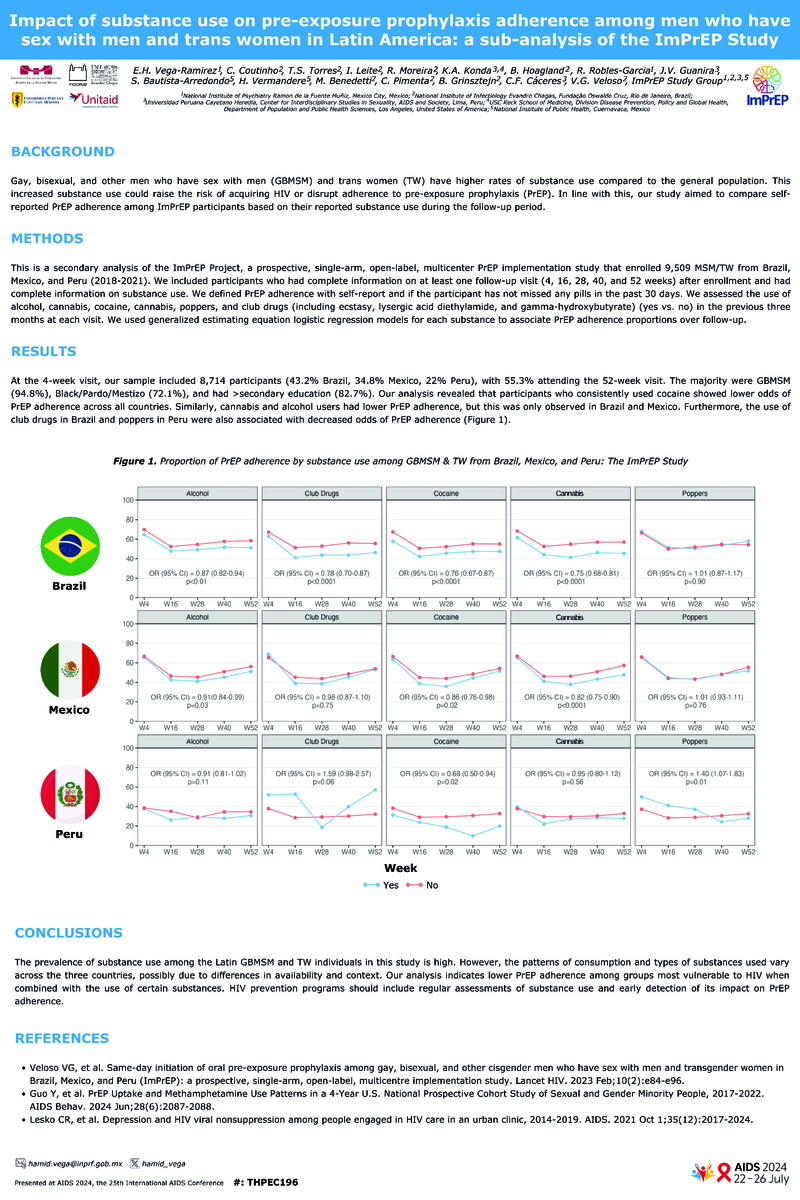Catálogo general VIH

Willingness to use HIV self-testing among MSM from Brazil, Mexico, and Peru
Resumen
HIV self-testing (HIVST), an important tool within the combined HIV prevention package, is commercially available in Latin America since 2015. This study aims to describe factors associated with willingness to use HIVST among men who have sex with men (MSM) from Brazil, Mexico and Peru. MSM were reached via advertisements on Facebook and GSN apps for sexual encounters (Grindr and Hornet) from March-May 2018. Participants were cisgender men, =18 years old and HIV negative. Willingness to use HIVST was defined as selecting the highest option on a five-point Likert scale. Factors associated with HIVST willingness were assessed using a logistic multivariable model. A total of 43,687 MSM started the questionnaire; 8,790(20%) were ineligible and 18,916(43%) completed and were included in this analysis. Median age was 28 years (IQR: 24-34). Most were from Brazil (59%), followed by Mexico (30%) and Peru (11%). The majority reported low (39%) or middle (43%) monthly income, and 32% = secondary education. Recruitment was primarily (85%) via GSN apps; 46% of MSM reported daily use of these apps. Although 53% scored =10 points on the HIV Incidence Risk for MSM scale indicating high risk, 65% had low perceived risk of getting HIV in the next year. A total of 3,715(20%) had never tested for HIV, mostly due to fear of a positive result (28%), low self-perceived risk (21%) and shame (24%). HIVST awareness and willingness were reported by 6,578(35%) and 7,609(40%), respectively. In the multivariable model willingness to use HIVST was associated with: being from Brazil compared to Peru (AOR1.74[IC95%1.55-1.94]); being 18-24 (AOR1.19[IC95%1.08-1.31]) or 25-35 years of age (AOR1.26[IC95%1.17-1.37]) compared to =35; >secondary education (AOR1.33[IC95%1.24-1.44]) compared to =secondary education; middle (AOR1.42[IC95%1.32-1.52]) and higher income (AOR2.10[IC95%1.90-2.31]) compared to low; daily use of GSN apps (AOR1.11[IC95%1.32-1.52]); willingness to use PrEP (AOR1.44[IC95%1.35-1.54]); and recent sex under the influence of drugs (AOR1.08[IC95%1.01-1.16]). Testing-related variables (lifetime HIV testing, HIVST awareness and HIVST barriers) were also associated with HIVST in the same model (Table). Willingness to use HIVST was low among MSM from Brazil, Mexico and Peru. Efforts to increase HIVST knowledge and resolve perceived barriers are warranted. HIVST delivery platforms could be incorporated to PrEP implementation programs in these countries.- Tema:
Autoría:
TORRES, Thiago S.; KONDA, Kelika Anne; VEGA RAMÍREZ, E. Hamid; ELORREAGA REYES, Oliver A.; DÍAZ SOSA, Dulce; PIMENTA, Cristina; HOAGLAND, Brenda; LÓPEZ GATELL, Hugo; ROBLES GARCÍA, Rebeca; DÍAZ, Steven D.; GRINSZTEJN, Beatriz; CÁCERES PALACIOS, Carlos Fernando; VELOSO, Valdilea G.
Autoría institucional: ImPrEP Study Group
Autoría institucional: ImPrEP Study Group
Ficha bibliográfica
- Año de publicación:
- [2019]
- Descripción física:
- [1] p.
- Formato:
- Folleto
- Tipo de documento:
- Coloquios y ponencias
- Notas:
- Póster presentado en la 26th Conference on Retroviruses and Opportunistic Infection (CROI) celebrada en Seattle (Estados Unidos) del 4 al 7 de marzo de 2019.
- Más información:
-
Contenidos relacionados
También te pueden interesar
-
Awareness, willingness and barriers to HIV Self-testing (HIVST) among Men who Have Sex with Men (MSM) in Brazil, Mexico, and Peru: a web-based cross-sectional study
-
Depression among trans women and men who have sex with men from Brazil, Mexico, and Peru: who has the highest odds?
-
Impact of substance use on pre-exposure prophylaxis adherence among men who have sex with men and trans women in Latin America: a sub-analysis of the ImPrEP Study





